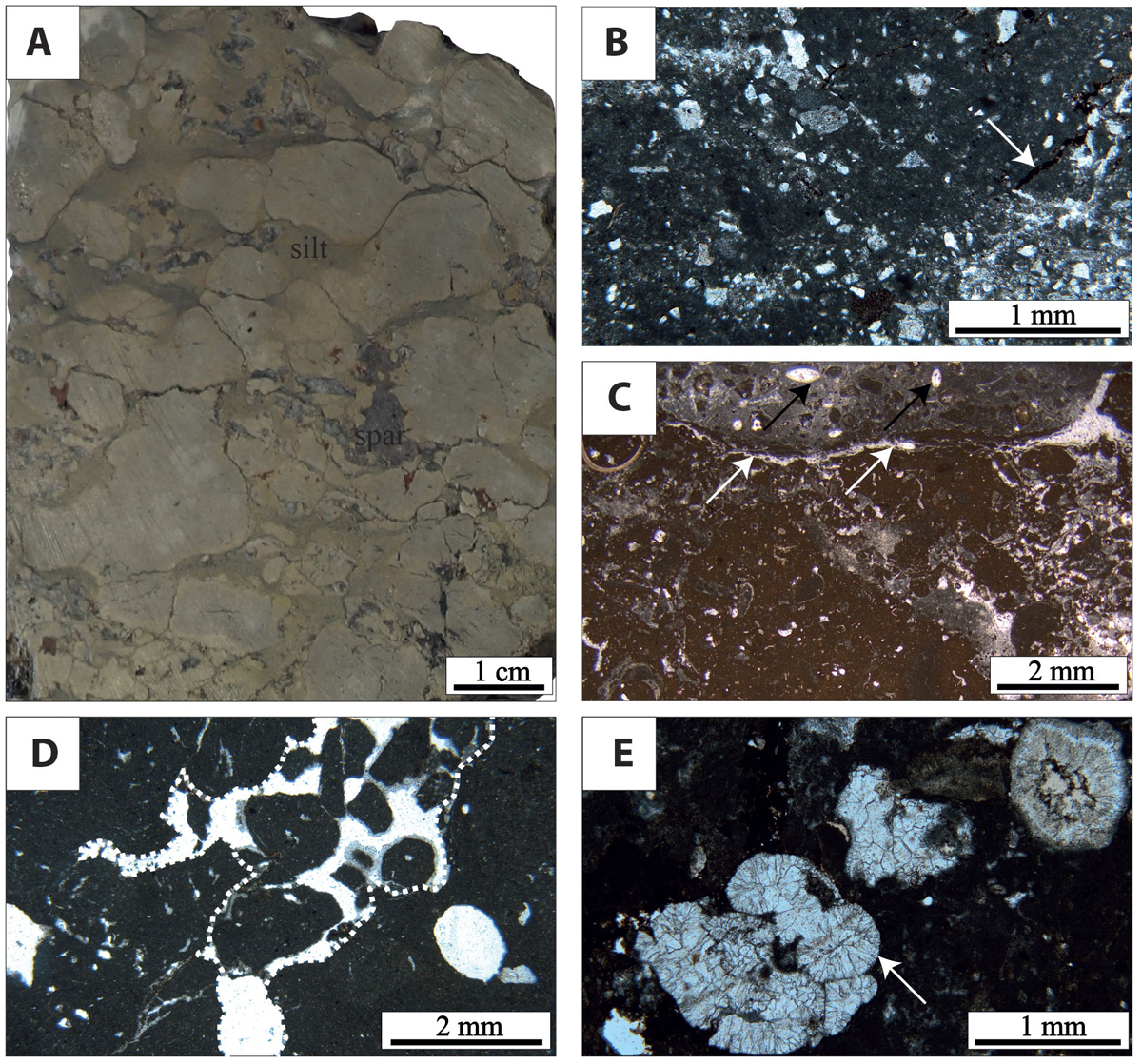Fig. 11

Download original image
Brecciated and palustrine limestones (F13 facies). (A) Core photograph of a nodular limestone (F13 facies). The nodules (glaebules) are well differentiated indicating long-duration pedogenic processes, the voids between the nodules are filled with silt and blocky calcite (spar). (B) Thin section of a pedogenically modified calcarenite (F7 facies) displaying cracks lined with the clay material (white arrow). This facies is frequent at the top of the F7 calcarenite beds. (C) Thin section of an intraclastic limestone with microbial crusts (F9 facies) displaying subaerial exposure features (silt fill, perigranular cracks (white arrows) around a nodule composed of ostracodal mudstone (black arrows indicate ostracods). (D) Microphotograph showing a conduit (outlined by the dashed line) within a dense dark micrite filled with clasts of the same micrite, resulting probably from the enlargement of a root cavity and filled with glaebules (PPL). (E) Thin section of a palustrine carbonate made of dense dark micrite and showing a well-developed cluster of Microcodium.
Current usage metrics show cumulative count of Article Views (full-text article views including HTML views, PDF and ePub downloads, according to the available data) and Abstracts Views on Vision4Press platform.
Data correspond to usage on the plateform after 2015. The current usage metrics is available 48-96 hours after online publication and is updated daily on week days.
Initial download of the metrics may take a while.




